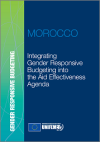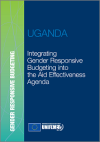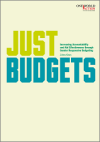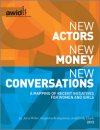FUNDAR 32
Well-being gender budgeting (WBGB) experiences use a multidimensional approach for planning and budgeting combining the Capability Approach along with gender responsive budgeting.
This synthesis paper examines the evolution of efforts to address domestic violence in Latin America. In the outset, the authors elucidate the methodological dilemmas involved in collecting data on domestic violence. The paper discusses some of the outcom
UN Women Policy Brief: Income and Consumption Tax Reform for Timor-Leste 2016
This report presents the findings of a country review carried out in Cameroon by NTAKEU Bruno and Fon Mercy under the programme "Integrating gender responsive budgeting into the aid effectiveness agenda" launched by UNIFEM and the European Commission (EC) in 2008.
This report presents the findings of a country review carried out in Tanzania by Liisa Kytoa under the programme "ntegrating gender responsive budgeting into the aid effectiveness agenda" launched by UNIFEM and the European Commission (EC) in 2008.
This research was carried out by Ms Nalini Burn, GRB Expert under the programme "Integrating gender responsive budgeting into the aid effectiveness agenda" launched by UNIFEM and the European Commission (EC) in 2008.
This report presents the findings of a country review carried out in Uganda by Nite Tanzarn under the programme"Integrating gender responsive budgeting into the aid effectiveness agenda" launched by UNIFEM and the European Commission (EC) in 2008.
This report synthesises findings from a two year research and advocacy programme "Just Budgets" carried out in partnership with four leading African civil society organisations.
This report by Nalini Burn, Larabi Jaidi and Hayat Zirari (2005) is a diagnostic study designed to analyse the potential of gender mainstreaming in the budget process of Morocco's communes.
The third report in a new research series on resources for women's rights organizing from the Association for Women's Rights in Development, this publication presents the results of our mapping of new donors making major commitments to work with "women and girls", to better understand this trend and







